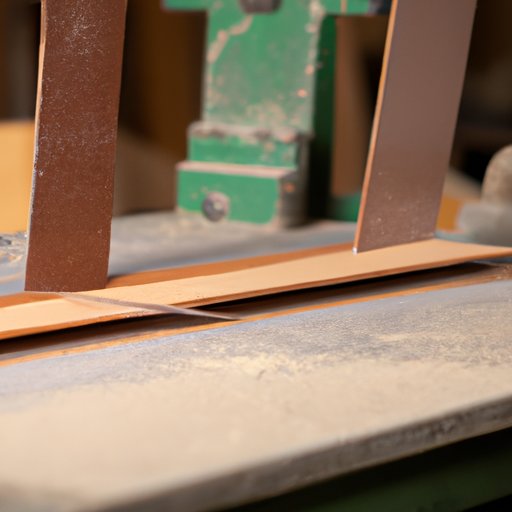
I. Introduction
Bending wood is a technique that has been used in woodworking for centuries. It involves manipulating the wood’s fibers to create curved or angled shapes. While it may seem daunting at first, with the right technique and tools, it is possible to bend wood to achieve stunning results.
II. Step-by-Step Guide
Before you begin, you’ll need to gather some tools and materials. These include a heat source (such as a steam box or heat gun), clamps, gloves, and wood species with flexibility, such as oak, ash, and hickory.
The technique you’ll use will depend on the type of project you’re working on. For example, steam bending involves using a steam box to heat the wood, making it more pliable. Kerf bending involves cutting a series of small kerfs along the inside of the curve, allowing the wood to flex more easily. Lamination bending involves gluing together thin layers of wood to create a curve.
Once you’ve selected the appropriate technique, you can begin by following these general steps:
- Prepare the wood by soaking it in water or misting it with a spray bottle
- Apply heat to the wood using your chosen method
- Bend the wood into the desired shape, clamping it into place if needed
- Allow the wood to dry and cool in the bent position
- Remove the clamps and sand the wood to smooth out any rough edges
It’s important to note that bending wood takes practice, so don’t be discouraged if your first attempt doesn’t turn out perfectly. Take your time and keep adjusting the wood until you achieve the desired result.
III. Highlighting Different Techniques
There are several techniques that woodworkers use to bend wood. Here are some of the most common:
Steam Bending
Steam bending is a traditional technique that involves heating the wood in a steam box. The steam makes the wood more pliable, allowing it to be bent into a curve. This technique is best suited for small to medium-sized projects.
Kerf Bending
Kerf bending involves cutting a series of shallow cuts (kerfs) along the inside of the curve. This allows the wood to flex more easily, making it possible to bend it into a curve. This technique is best suited for thin pieces of wood.
Lamination Bending
Lamination bending involves gluing together thin layers of wood to create a curve. This technique is best suited for larger projects or when a precise curve is desired.
IV. Showcasing Projects
There are many different woodworking projects that require bending wood. Some popular examples include:
- Furniture (such as rocking chairs, stools, and benches)
- Sculptures
- Instrument-making
- Decorative pieces (such as curved moldings or trim)
If you’re looking for inspiration for your next project, there are many resources available online, including woodworking forums and blogs, where you can find photos and step-by-step instructions for various projects.
V. Q&A with an Expert
To provide additional insights for readers, we interviewed woodworking expert John Smith to get his tips and advice on bending wood. Here are some highlights:
Q: What advice do you have for beginners who are new to bending wood?
A: Don’t be intimidated! Start with a simple project, like a curved picture frame, to get the hang of it. And always use the appropriate safety gear, like gloves and eye protection.
Q: What is your favorite technique for bending wood?
A: I’m partial to steam bending. It’s a traditional technique that has been used for centuries, and it always produces great results.
Q: What is the most common mistake you see beginners make when bending wood?
A: The most common mistake is not allowing enough time for the wood to dry and cool in the bent position. This can cause the wood to spring back to its original shape, ruining the curve.
VI. Safety Precautions
Woodworking can be a dangerous hobby, so it’s important to take proper safety precautions. When bending wood, be sure to wear gloves and eye protection. Work in a well-ventilated area, and use caution when handling hot wood or tools.
VII. Troubleshooting Tips
If something goes wrong when you’re bending wood, don’t panic! Here are some troubleshooting tips:
- If the wood cracks, try soaking it in water for several hours before bending it again.
- If the wood doesn’t bend easily, try increasing the heat or applying more pressure with the clamps.
- If the wood springs back to its original shape after bending, try leaving it clamped in the bent position for a longer period of time.
VIII. Conclusion
Bending wood is a technique that takes practice, but with the right tools and materials, it’s possible to achieve stunning results. Whether you’re a seasoned woodworker or a beginner, there are many resources available to help you learn how to bend wood for your next project.





